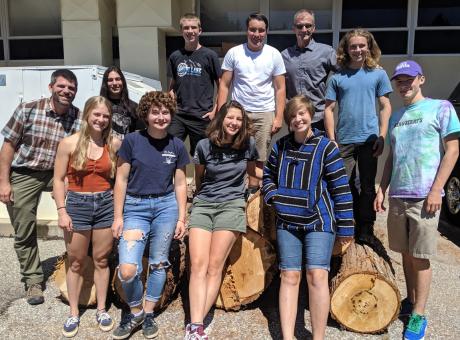Colfax High School InvenTeam
Storm water runoff, which can come from septic tanks, cars, houses, construction sites, farms and ranches, carries with it pollution and debris. This physical waste can clog storm drains, and it is time consuming and expensive for the state to clean the drains. Moreover, the polluted overflow can contaminate water and be detrimental to human health. The Colfax High School InvenTeam decided to create a storm drain intake to separate the debris from this runoff by combining the design features of a storm drain and a trash receptacle. The intake would be made of wood, plastic and metal and powered by the force of the water flowing through the device. Debris that makes its way into the drain would be separated and then lifted into a public trash receptacle, thereby facilitating work for city garbage collectors. Named the WasteAway, the storm drain intake consists of a chassis, drive box/drop box, separation belt, and garbage can. As the drop box fills with storm water, the weight of the water pulls the box down and turns a system of rods connected to the separation belt. As the belt moves, its wire screen catches the debris and then pulls it into a garbage receptacle. The drive box empties and a counterweight pulls it back to the original position. The Colfax High School InvenTeam tested three different ideas for the WasteAway The team's first idea was to create a device that would enable a garbage collector to manually crank the waste out of the drain and into a garbage can. The town public works manager, Bob Costa, concluded that this would add too much time to the garbage collection process. The team's second idea was to power the waste remover with an electric motor; however, Costa informed the team that most garbage cans were not located near power supplies. With these insights, the team arrived at its third idea, which was a water-powered waste remover. In developing the water-powered waste remover, the students sought the most effective self-propelled power source. They considered using a water wheel, but their research proved a drop box would be most effective. After planning the drive mechanism, the students used Solid Edge to refine it. To create the drop box, they used a "toilet" method: this employed the flap from a toilet, which is forced to stay open until water is drained. The students built models with wood, and concluded the finished product would be made of metal, wood and plastic.


